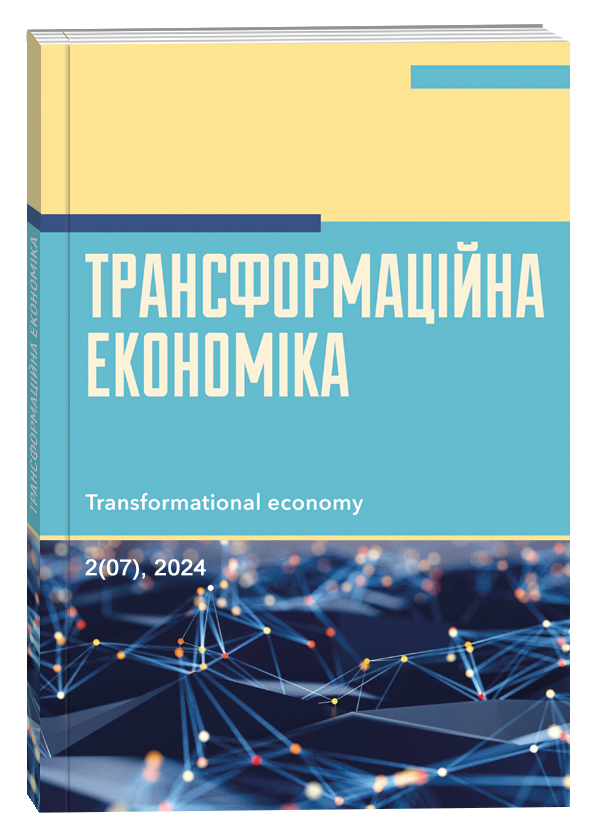DIGITIZATION OF EDUCATION IN UKRAINE: TECHNOLOGIES AND TEACHING METHODS
Abstract
Digital technologies in education have been utilized for quite some time. However, the COVID-19 pandemic provided a significant impetus for their widespread adoption. During this period, technologies evolved from being a mere supplement to the educational process to an essential component. In recent years, this field has seen rapid development, with new inventions and trends emerging that facilitate learning and enhance its effectiveness. Digitalization of the educational process is a broad concept. It includes not only distance education or students working with computers, as some might think. Digitalization encompasses the use of information technologies at all levels: not only in teaching but also in organizational aspects (electronic diaries, chats with teachers). Technical innovations apply to various types of educational institutions: schools, colleges, universities, and educational courses. In Ukraine, as in the rest of the world, digitalization began long before the pandemic. As early as the 2000s, students had information technology lessons, and computers appeared on many teachers' desks. However, it was only around 2018 that digital technologies began to be integrated into all educational processes, and today it is difficult to imagine education without their use. The widespread digitalization of education is primarily explained by the need to keep up with societal development trends. Digital technologies are being integrated into all areas of life: the economy and finance, healthcare, transportation, culture, and the service sector. Education is no exception. This is the new reality we live in. The growing popularity of information technologies is easily explained by their ability to make life more convenient and simpler. Specifically, in the educational process, the following advantages of IT are highlighted: increased engagement, motivation, and interest of students in the learning process; activation of independence and cognitive activity; visual and more interesting presentation of material; access to large volumes of information, including beyond the curriculum; elimination of paperwork for teachers; feedback and simplified communication between students, teachers, and parents; use of distance technologies and the possibility of learning from anywhere in the world with an internet connection; availability of numerous online learning courses. Furthermore, digital educational technologies help ensure an individualized approach to each student, taking into account their characteristics and cognitive abilities. Key trends in educational technologies in recent years include: lifelong learning, open online courses, adaptive education, integrated approach, changing the role of teachers, distance learning, gamification, advanced learning technologies. While digitalization of education offers numerous benefits, it also faces criticism and resistance due to concerns about social skill development, health impacts, device dependency, job reduction, and the high costs of implementation. Despite these challenges, the continued integration of digital technologies in education is inevitable, as it aligns with the broader trends of societal development.
References
Грищенко О. А. Інтерактивні методики навчання на основі цифрових технологій. Педагогічні науки. 2021. № 4. С. 73–80.
Ковальчук І. М. Використання цифрових технологій в освітньому процесі: переваги та виклики. Вісник Київського національного університету імені Тараса Шевченка. 2022. № 2. С. 45–52.
Петренко В. В. Адаптивне навчання з використанням цифрових технологій. Освітній простір. 2023. № 3. С. 88–97.
A Memorandum on Lifelong Learning // Commission of the European communities. URL: http://arhiv.acs.si/dokumenti/Memorandum_on_Lifelong_Learning.pdf
The Future of Jobs Report 2018 // World Economic Forum. URL: http://www3.weforum.org/docs/WEF_Future_of_Jobs_2018.pdf
Let's Talk About Adaptive Learning. URL: https://www.smartsparrow.com/what-is-adaptive-learning/
Defining Adaptive Learning. URL: www.pearson.com/content/dam/one-dot-com/one-dot-com/global/Files/about-pearson/innovation/Pearson-Decoding-Adaptive-v5-Web.pdf
Integral education: a brief introduction. URL: https://theartofintegralbeing.org/portfolio/integral-education-a-brief-introduction/
Integral Education. URL: https://aurosociety.org/society/index/Integral-Education
Fishbone diagram. URL: https://asq.org/quality-resources/fishbone
What is STEAM Education? URL: https://artsintegration.com/what-is-steam-education-in-k-12-schools/
Why is Singapore’s school system so successful, and is it a model for the West? URL: https://theconversation.com/why-is-singapores-school-system-so-successful-and-is-it-a-model-for-the-west-22917
Hryshchenko, O. A. (2021). Interaktyvni metodyky navchannia na osnovi tsyfrovyh tehnologii [Interactive teaching methods based on digital technologies]. Pedahohichni nauky – Pedagogical Sciences, (4), 73–80.
Kovalchuk, I. M. (2022). Vykorystannia tsyfrovyh tehnologii v osvitnomu protsesi: perevahy ta vyklyky [The use of digital technologies in the educational process: advantages and challenges]. Visnyk Kyivskoho natsionalnoho universytetu imeni Tarasa Shevchenka – Bulletin of Taras Shevchenko National University of Kyiv, (2), 45–52.
Petrenko, V. V. (2023). Adaptyvne navchannia z vykorystanniam tsyfrovyh tehnologii [Adaptive learning using digital technologies]. Osvitnii prostir – Educational Space, (3), 88–97.
A Memorandum on Lifelong Learning. Commission of the European Communities. Available at: http://arhiv.acs.si/dokumenti/Memorandum_on_Lifelong_Learning.pdf
The Future of Jobs Report 2018. World Economic Forum. Available at: http://www3.weforum.org/docs/WEF_Future_of_Jobs_2018.pdf
Let's Talk About Adaptive Learning. Available at: https://www.smartsparrow.com/what-is-adaptive-learning/
Defining Adaptive Learning. Pearson. Available at: https://www.pearson.com/content/dam/one-dot-com/one-dot-com/global/Files/about-pearson/innovation/Pearson-Decoding-Adaptive-v5-Web.pdf
Integral education: a brief introduction. Available at: https://theartofintegralbeing.org/portfolio/integral-education-a-brief-introduction/
Integral Education. Auro Society. Available at: https://aurosociety.org/society/index/Integral-Education (accessed May 15, 2024)
Fishbone diagram. Available at: https://asq.org/quality-resources/fishbone
What is STEAM Education? Available at: https://artsintegration.com/what-is-steam-education-in-k-12-schools/
Why is Singapore’s school system so successful, and is it a model for the West? Available at: https://theconversation.com/why-is-singapores-school-system-so-successful-and-is-it-a-model-for-the-west-22917


